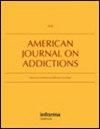Patient–provider interactions about cannabis for therapeutic purposes vary as a function of provider type: A pilot study
Abstract
Background and Objectives
Limited evidence guides the efficacy and safety of cannabis for therapeutic purposes (CTP). Healthcare providers lack requisite knowledge to advise and support patients. This study aimed to describe and compare several aspects of initial CTP interactions across different provider types.
Methods
Adult cannabis consumers (N = 507) from the United States completed an anonymous online survey about their initial CTP interaction with their healthcare provider. Providers were categorized into four groups (Mental Health [MH], Family Medicine [FM], Medical Clinics [MC], and Other Specialty [OS]). Analyses compared several aspects of the interaction (e.g., risk mitigation, recommendations, satisfaction/confidence) across groups.
Results
Less than half of the sample reported discussion of cannabis risks (44.0%) or follow-ups at subsequent visits (46.7%). Recommendations (where to obtain, consumption method, dose, frequency, and authorization) were uncommon (9.7%–25.2%). While the MH group reported the highest rates of risk mitigation behaviors, regression models adjusted for sociodemographic and cannabis characteristics were largely nonsignificant. For recommendations, the MC group was more likely than the MH group to report receiving all recommendations (p < .05). Younger age and greater cannabis-related problems increased likelihood of risk mitigation and recommendations.
Discussion and Conclusions
CTP interactions focused on risk but generally lacked comprehensive recommendations that could potentially promote safe use. Data from provider perspectives could support the need for CTP guidelines and develop training for healthcare providers to promote safe CTP practices.
Scientific Significance
For the first time, this study explored several aspects of CTP interactions and compared experiences across a variety of providers.

 求助内容:
求助内容: 应助结果提醒方式:
应助结果提醒方式:


